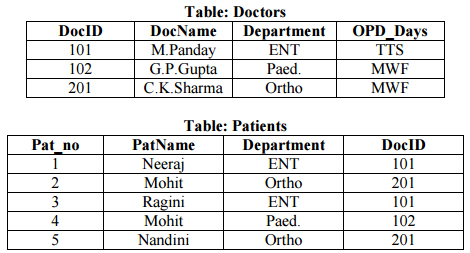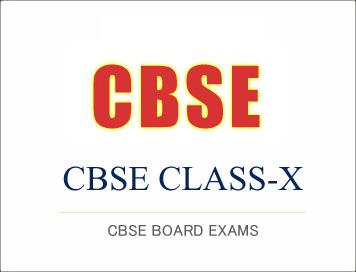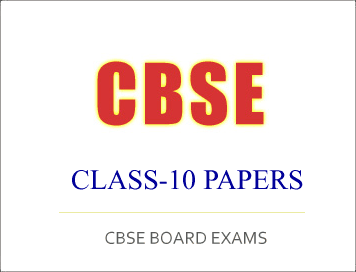CBSE PORTAL : (Download) CBSE Class-12 2016-17 Sample Paper And Marking Scheme (Multimedia and Web Technology) | |
- (Download) CBSE Class-12 2016-17 Sample Paper And Marking Scheme (Multimedia and Web Technology)
- (Download) CBSE Class-10 Sample Paper (Social Science) 2016
- (Download) CBSE Class-10 Sample Paper And Marking Scheme 2018-19 : English Communicative
- (Download) CBSE: Class XII Knowledge Traditions and Practices of India Question Paper - 2018
- CBSE Class-10 Exam 2018 : All India Scheme Question Paper-E-Publishing and E-Office
- (Download) CBSE Class-10 Sample Paper And Marking Scheme 2018-19: Elements of Business
- (Download) CBSE Class-12 Sample Paper 2018-19 :Biotechnology
| (Download) CBSE Class-12 2016-17 Sample Paper And Marking Scheme (Multimedia and Web Technology) Posted: 02 Jan 2019 04:05 AM PST | ||||||||||||||||||||||||||||||||||||||||
| (Download) CBSE Class-10 Sample Paper (Social Science) 2016 Posted: 02 Jan 2019 04:04 AM PST (Download) CBSE Class-10 Sample Paper (Social Science) 2016Very short answers -VSA (1 mark)
Short Answers-SA (3 marks)
Click Here To Download Full Sample Paper<<Go Back To Main Page
| ||||||||||||||||||||||||||||||||||||||||
| (Download) CBSE Class-10 Sample Paper And Marking Scheme 2018-19 : English Communicative Posted: 02 Jan 2019 03:34 AM PST | ||||||||||||||||||||||||||||||||||||||||
| (Download) CBSE: Class XII Knowledge Traditions and Practices of India Question Paper - 2018 Posted: 02 Jan 2019 02:59 AM PST
Question Papers For Board Examinations 2018Class – XIISubject – Knowledge Traditions and Practices of IndiaSubject : Knowledge Traditions and Practices of India Class : XII Year : 2018 General Instructions :
Questions :SECTION A(Reading Skills)(a) Read the passage given below and answer the following questions : Vāstu-vidyā or Śilpaśāstra - the science of architecture- is one of the technical subjects studied in ancient India, along with Āyurveda (science of medicine), dhanurveda (science of archery), jyotisa (astronomy), etc. In the earliest texts, the word Vāstu occurs in the sense of a building site or the building itself. Later on, other subjects such as temple construction, town planning, public and private buildings and forts were included in the discipline in which the construction of a structure was regarded as a sacred act. In the Atharvaveda there are references to different parts of the building such as sitting-room, inner apartment, room for sacred fire, cattleshed and reception room (Atharvaveda, IX.3). The Sānkhāyana Grhya Sūtra (c. 500 BCE) describes in three chapters the ceremonials performed for constructing a building. Kautilya’s Arthaśāstra (c. 300 BCE) deals with town planning, fortifications and other structures of civil nature. Samarāngana Sūtradhāra, authored by King Bhoja (1010 -55 CE), discusses methods of examination of a site, analysis of the soil, systems of measurement, qualifications of the sthapati (architect) and his assistants, building materials, consecration of the plan followed by construction of foundation, basal mouldings and technical details for each part of the plan, design and elevation. The two principal south Indian texts, Mayamata (1000 CE) and Mānasāra (1300 CE), share a common perception of architectural plan and design of the southern (Drāvida) vintage but while the former has a practical outlook, the latter develops the theoretical side of the science. (i) Explain Vastu as explained in ancient texts. (b) Read the passage given below and answer the following questions : Miniature paintings are executed on books and albums, and on perishable material such as paper and cloth. The Palas of Bengal were the pioneers of miniature painting in India. The art of miniature painting reached its zenith during the Mughal period. The tradition of miniature paintings was continued by the painters of different Rajasthani schools of painting, like Bundi, Kishangarh, Jaipur, Marwar and Mewar. The Ragamala paintings also belong to this school, as do the Company paintings produced during the British Raj. Unfortunately, early miniatures in wood and cloth have been completely lost, the earliest extant belonging to the late 8th or mid 9th centuries of the Pala period in eastern India, are representations of Buddhist yantra, graphic symbols which were visual aids to the mantra and the Dharani. Conforming to the canons of iconography, these Buddhist miniatures deify Buddhist thought such as Prajñāpāramitā, who, as the mother of all the Buddhas, was the personification of esoteric knowledge. The Buddhist paintings were rawn in red and white, forming colour planes. The inspiration came from the metal images, giving an illusion of relief. Miniatures were painted according to the rules of mural painting, the rule of proportions being regulated by strict codes of measurement. Effects such as foreshortening were derived from the study of sculpture rather than from reality. (i) When and in which part of India did the miniature painting start ? Click Here To Download Full Paper<< Go Back To Main PageCourtesy: CBSE | ||||||||||||||||||||||||||||||||||||||||
| CBSE Class-10 Exam 2018 : All India Scheme Question Paper-E-Publishing and E-Office Posted: 02 Jan 2019 02:38 AM PST | ||||||||||||||||||||||||||||||||||||||||
| (Download) CBSE Class-10 Sample Paper And Marking Scheme 2018-19: Elements of Business Posted: 02 Jan 2019 02:21 AM PST |
| Marks | |||
| 1. | 1. A private company can start business as soon as it receives the: a. certificate of incorporation; b. certificate of commencement; c. certificate of minimum subscription; d. memorandum of association. | Understanding | 1 |
| 2. | It is necessary for a ____________________to keep an index of members. a. Private company; b. Public company; c. Sole- proprietorship firm; d. Joint-Hindu family business. | Understanding | 1 |
| 3. | As a finance manager of the company you have to classify the funds of business on the basis of ownership. You may classify the sources as: a. borrowed funds; b. owned funds; c. short term funds; d. both a and b. | Understanding | 1 |
| 4. | In order to serve as a lubricant fostering smooth operations of a business communication services must not be: a. efficient; b. ineffective; c. accurate; d. fast. | Understanding | 1 |
| 5. | 5. A transaction between two parties where the buyer receives goods, services or assets in exchange for money is called: a. Sale; b. Sales return; c. Purchases return; d. an Offer. | Understanding | 1 |
Click Here To Download Full Sample Paper
Click Here To Download Full Marking Scheme
CBSE (Class X) Previous Year Papers Printed Books
<<Go Back To Main Page
(Download) CBSE Class-12 Sample Paper 2018-19 :Biotechnology
Posted: 01 Jan 2019 10:50 PM PST
(Download) CBSE Class-12 Sample Paper 2018-19 : Biotechnology
Class XII
Biotechnology (045)
Time allowed: 3 Hours
Max. Marks: 70
General Instructions:
(i) Question paper contains four sections-A, B, C and D.
(ii) All questions are compulsory
(iii) There is internal choice in all sections. You have to attempt only one of the choices in such questions.
(iv) Question numbers 1 to 6 are very short answer questions, carrying 1 mark each.
(v) Question numbers 7 to 14 are short answer questions, carrying 2 marks each.
(vi) Question numbers 15 to 25 are also short answer questions, carrying 3 marks each.
(vi) Question numbers 26 to 28 are long answer questions, carrying 5 marks each.
(vii) Use of calculators is not permitted. However, you may use log tables, if necessary.
SECTION-A
1. 4 copies of ds DNA are subjected to polymerase chain reaction. How many copies would be obtained after 20 cycles?
OR
1.How can we use LEU 2 gene as a selectable marker?
2. Specify the role of alkaline phosphatase in cloning.
3. Specific activity increases during subsequent steps of a protein purification scheme. How can you relate it with the purity of protein?
4. Animal cells in a culture medium were placed in a regular incubator used for growing bacterial cells. Do you expect the animal cells to grow or not?
5. What is Gene Knock out?
6. What will be the consequence if a protein is having an altered structure?
OR
6.Expand and define PER?
Click Here To Download Full Sample Paper
Click Here To Download Full Marking Scheme
CBSE (Class XII) Previous Year Papers Printed Books
| You are subscribed to email updates from CBSE PORTAL : CBSE, ICSE, NIOS, JEE-MAIN, AIPMT Students Community. To stop receiving these emails, you may unsubscribe now. | Email delivery powered by Google |
| Google, 1600 Amphitheatre Parkway, Mountain View, CA 94043, United States | |



